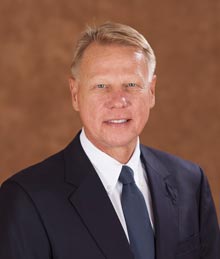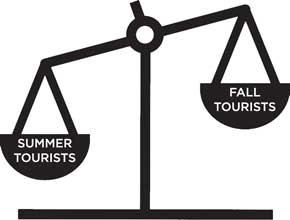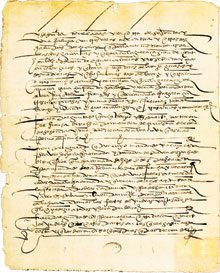 Dr. Daryl Ferguson is the Founder of the Santa Elena Foundation. The Spanish town of Santa Elena, located on a remote end of Parris Island, was first discovered in 1979 by Dr. Stan South of the South Carolina Institute of Archaeology. Ferguson, under the mentoring of Dr. Larry Rowland, did the research that proved Santa Elena was much more than the Spanish capital of La Florida.
Dr. Daryl Ferguson is the Founder of the Santa Elena Foundation. The Spanish town of Santa Elena, located on a remote end of Parris Island, was first discovered in 1979 by Dr. Stan South of the South Carolina Institute of Archaeology. Ferguson, under the mentoring of Dr. Larry Rowland, did the research that proved Santa Elena was much more than the Spanish capital of La Florida.
In 1969 the treasure salvager Mel Fisher was frustrated by his inability to locate two treasure ships that had sunk off of the Florida Keys. In 1622 a Spanish treasure fleet of 28 ships sank off the Florida Keys when a hurricane hit them.
Mel Fisher was looking for the fleet’s two largest ships, the Atocha and the Santa Margarita. But he was not having any luck searching for them on the eastern side of the Keys. Fisher knew Dr. Gene Lyon, the  foremost 16th century Colonial scholar in the U.S., from church. He knew that Gene could translate 16th century Spanish documents. Furthermore, he knew Gene Lyon would know where to find those documents. After doing his detective work in several Spanish archives, Gene Leon gave Mel Fisher this message: “You are diving in the wrong location. The Atocha is not located where you are diving. It is located near a sandy atoll about 30 miles west, north west of Key West.”
foremost 16th century Colonial scholar in the U.S., from church. He knew that Gene could translate 16th century Spanish documents. Furthermore, he knew Gene Lyon would know where to find those documents. After doing his detective work in several Spanish archives, Gene Leon gave Mel Fisher this message: “You are diving in the wrong location. The Atocha is not located where you are diving. It is located near a sandy atoll about 30 miles west, north west of Key West.”
It took Mel Fisher some time, but after eighteen months of diving in the area, he found the remnants of the second largest treasure ship in the armada – the Atocha. It’s value? Two hundred and fifty million dollars.
I invited both Dr. Lyon and Dr. Paul Hoffman to be the first members of our Advisory Board. They accepted. At the time only one thing was in my mind: Our initial findings on Santa Elena basically challenge everything that we have been teaching our children. They challenge everything that you and I have been taught. The settlement of America did not start with the English at Jamestown. It started with the Spanish settlements of Santa Elena and St. Augustine. Both the French and Spanish made Port Royal Sound, not Jamestown, their initial settlement target. Furthermore, the settlement of what is now the U.S. did not occur as independent events. It happened because France and Spain were literally at war with each other, and they actually raced to be the first to settle our country. No one would believe us unless we had the backing of the nation’s top historians. But when Gene Lyon and Paul Hoffman joined our Advisory Board, we did not expect them to roll up their sleeves and rekindle the research . . . but that’s exactly what they did.
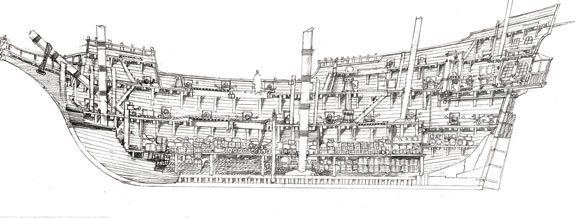 The Foundation knew one thing. The strength of our foundation would be based, in part, on the quality of our research of 16th century documents. But most of those documents are in the hands of the Spanish government in the Archives of the Indies located in Seville… or in the hands of “old” Spanish families. One day last February Dr. Lyon called me and said, “Daryl, there are some valuable Spanish documents in the secured research room of Flagler College’s Library. I would like to go to St. Augustine and see what they say. Do you want to join me?” I quickly accepted his invitation. Once we entered the library we were escorted into a secure room where 100 microfilm reels were stored. The files originated from the private collection of a Spanish family. We felt a bit like Indiana Jones trying to find two rare prisms before opening a secret door. But after a few hours, Dr. Lyon was able to identify the specific microfilm reels that pinpointed the history surrounding the “lost” 16th century. He put the first reel on the microfilm reader. Nothing of interest. But after the third or fourth reel, he woke up everyone in the library: DARYL, WE HIT THE MOTHER LODE. I have found
The Foundation knew one thing. The strength of our foundation would be based, in part, on the quality of our research of 16th century documents. But most of those documents are in the hands of the Spanish government in the Archives of the Indies located in Seville… or in the hands of “old” Spanish families. One day last February Dr. Lyon called me and said, “Daryl, there are some valuable Spanish documents in the secured research room of Flagler College’s Library. I would like to go to St. Augustine and see what they say. Do you want to join me?” I quickly accepted his invitation. Once we entered the library we were escorted into a secure room where 100 microfilm reels were stored. The files originated from the private collection of a Spanish family. We felt a bit like Indiana Jones trying to find two rare prisms before opening a secret door. But after a few hours, Dr. Lyon was able to identify the specific microfilm reels that pinpointed the history surrounding the “lost” 16th century. He put the first reel on the microfilm reader. Nothing of interest. But after the third or fourth reel, he woke up everyone in the library: DARYL, WE HIT THE MOTHER LODE. I have found 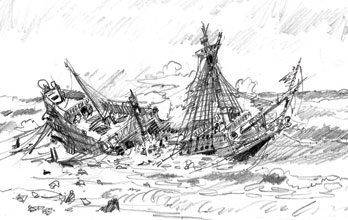 history that I did not know existed.” The document was written in 1569. The handwritten script on the page was so unusual and flowing that it was a piece of art in itself.
history that I did not know existed.” The document was written in 1569. The handwritten script on the page was so unusual and flowing that it was a piece of art in itself.
Gene Lyon was able to open the lock to an exceptionally important piece of history. After we left the library I asked him, “How many people have the skill to find and translate 16th century Spanish documents? He said, “Only a few. You first have to know how to read 16th century script. You have a big advantage if you are a historian; but there are not many of us. Then, you have to know where you can go to get the documents. In most cases, you have to go to Seville.”
I asked Gene three more question in fairly rapid fire. “How can we get access to more 16th century documents? Who would be willing to take the time to translate these documents into readable English? And what would we have to do to make some of these key documents available to people who have a real interest in history, Santa Elena, or just art?” Dr. Lyon turned to me and with a wink and said, “I’m sure there are answers to your questions.”
These questions led to a major Santa Elena project that will be released this month. The Spanish government has made the decision to allow the Santa Elena Foundation to reproduce and sell a limited number – 250 – of ten of its most important 16th century documents. Each of these ten documents focuses on either the settlement of Santa Elena or Europe’s first colony, La Florida.
Dr. Lyon translated these documents into English. By mid-November you will be able to buy these framed, or unframed, documents from either Rhett Gallery in Beaufort or from the Santa Elena Foundation (www.Santa-Elena.org). The document on the front cover was part of Spain’s interrogation of the Last Frenchman of Charlesfort. Spain’s King Philip was informed by his spies that France may still be at Charlesfort. He ordered the Cuban governor to dispatch a ship and destroy the fort. During this 1564 expedition the Spanish ship captain found an abandoned Charlesfort and one “last Frenchman.” Guillermo Rufin tells his Spanish interrogator why the French wanted to settle at Charlesfort on the front page. Here is the English translation:
“Captain Juan Ribao was a native of Dieppe in France who came to these parts with two armed galleasses; one of tonnage of a hundred and sixty tons. The other of sixty and a shallop with three lateen sails… and two more small shallops. By the sea they put within the said galleasses that he brought and in the said grand galleass one hundred men, twenty five seamen and 75 arquebusmen. They brought 15 large bronze cannon and two middle sized and 8 falcons all of bronze. In the small galleass they brought 50 men, 3 heavy guns, 1 medium sized, 6 falcons of bronze, and 25 arquebuses. He was asked by whose order and at whose cost they had made the armada. He said the armada had been made and dispatched by order of the Queen Mother of France and the Admiral of Bandoma. He said that they had come to this coast to settle the point of Santa Elena and to see if it was a good place to attack the Indies treasure fleet. And this was public knowledge.”
IN OUR NEXT ISSUE: Finding the ten most important 16th century documents.

